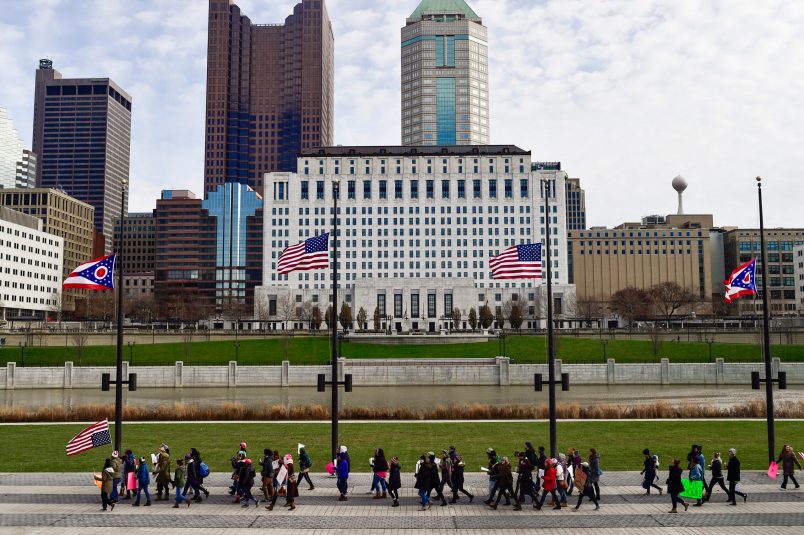Ohio groups working in concert to codify abortion protections in the state’s constitution overcame one of the final administrative hurdles Monday when the Ohio Ballot Board cleared them to start collecting signatures.
The Board’s job was to determine whether the proposed amendment contained only one issue.
“I will move that the initiative petition contains one proposed constitutional amendment,” Ohio Secretary of State Frank LaRose (R) said Monday at the board hearing, adding: “Is there a second?”
He was immediately seconded, prompting some applause from the meeting room.
The groups will now file with the secretary of state and move on to signature collection.
“We have been working toward this moment since June of 2022,” Dr. Marcela Azevedo, president of Ohio Physicians for Reproductive Rights said in a statement following the board’s vote.
The groups will now face the rigorous task of amassing 412,591 signatures from registered voters in at least 44 of Ohio’s 88 counties by July 5. Azevedo told TPM in a recent interview that they’re “shooting for 800,000” to have a wide buffer in case some signatures are tossed.
The groups have gotten through the major administrative hurdles — clearing the summary language with the state attorney general’s office and getting the ballot board approval — more or less on the timeline they were planning. Leo Jennings, a consultant working with the groups, told TPM in late January that they expected to “be in a position to start collecting signatures by early March.”
The process to fulfill the administrative requirements in Ohio was largely smooth, something some advocates had been nervous about after the Board of Canvassers in Michigan threw a wrench into the effort to get abortion protections on the ballot there. The abortion rights groups ultimately had to appeal to the Michigan Supreme Court. The processes in Ohio and Michigan are different, but many Ohio officials involved in the process are anti-abortion Republicans.
The groups are aiming to get the issue on the ballot for the 2023 general election — a strategic decision in which they’re banking on being boosted by resources from across the country while many states wait until the more electorally crowded cycle of 2024 to make their push.
“Historically, in Ohio, we have more than enough time,” Jennings said of the signature collecting. He pointed to a 2011 ballot initiative that repealed a law restricting public employees’ right to bargain collectively, which garnered over a million signatures.
“We think this issue is analogous with regard to the fervor around it,” Jennings said. “We have more than enough time to collect the signatures we need.”







Eh, oh, way to go Ohio.
Quite a good piece of news to start off the week! Go, progressive people of Ohio!
Ohio. Where rust goes to party and democracy goes to rust.
I know that the caption comes from Getty, but that is NOT the Ohio Statehouse. The building in the front center of the picture is currently occupied by the Ohio Supreme Court.
I don’t think that there will be a challenge getting more than 413,000 signatures. The challenge will be getting the minimum number of signatures in each of 44 counties.
The requirements appear to be signatures from at least 44 counties that add up to 10% of the previous total votes in the most recent governor’s race, plus a minimum of 5% of the total in at least 44 counties. That should be doable.